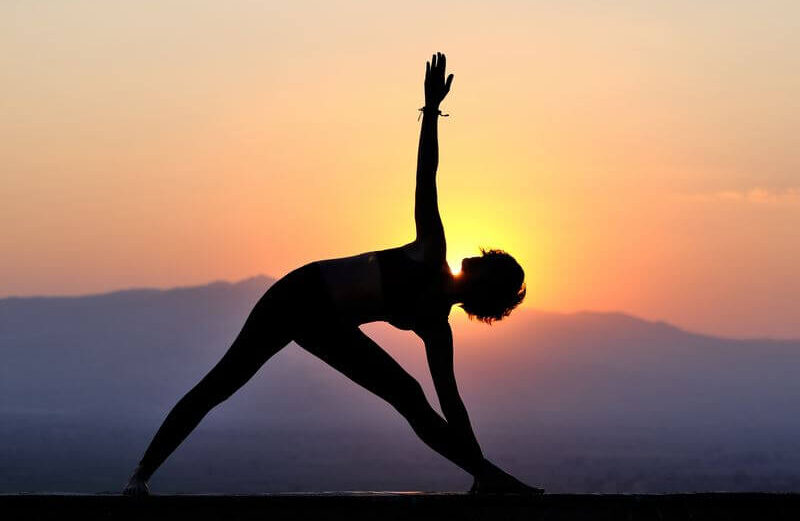In yoga practice the principal focus resides on the connection which occurs between breath, body and between mind and movement. Through its practice it teaches practitioners to create both mental clarity and physical equilibrium to achieve inner tranquility. Yogis at any level agree that yoga poses become harder to achieve if proper support elements are missing. The adoption of yoga props serves as the solution for improving your practice. The basic equipment provides users with a completely new practice perspective.
Props in yoga practice assist beginners along with experienced practitioners through helping them maintain safety while providing comfort and reaching better effectiveness in their practice. Yoga props usage in your exercise adds more value while you practice with purposeful caution. Proper guidance together with the appropriate tools will enable you to both protect your joints and deepen stretching abilities that lead to increased movement awareness.
What Are Yoga Props?
Yoga props usages serve as supportive tools for risk-free safe performance and optimal effectiveness when practicing yoga. Common yoga props include:
- Yoga blocks
- Straps
- Bolsters
- Blankets
- Wheels
- Chairs
- Walls
The benefits of each tool depend on the precise yoga posture as well as personal physical requirements. Using yoga props enables flexibility for specific movements based on your individual muscle potential.
Why Yoga Props Matter?
Yoga props usages demonstrate strength rather than indicating weakness since these tools enable you to achieve empowerment in your practice. Yoga props enhance your body positioning while reducing chances of injuries during practice and allowing deep controlled movements.
The following list outlines key reasons which support using yoga props during practice:
- The assistance of props functions best for extended poses and acts as supportive equipment.
- The appropriate use of props enables users to develop proper spinal alignment and proper body posture.
- The use of props creates comfort by relieving pressure on bones and skeletal muscles.
- The practice is accessible to everyone because of improvements made regarding age and physical abilities.
How to Use Yoga Props in Different Poses
You can improve your yoga practice by using props in particular poses according to the following examples. The examples here shows practical applications of yoga props usages.
Downward-Facing Dog (Adho Mukha Svanasana)
The prop choice for this practice includes both yoga blocks and wall support. Position your hands on blocks while keeping your heels close to a wall surface. The wrist pressure eases up and the alignment becomes better through this technique.
Yoga props usages provide essential support to people who have tight hamstrings and shoulder problems while permitting easier and comfortable execution of this pose.
Seated Forward Fold (Paschimottanasana)
Prop Used: Strap and bolster
Use a strap around your feet to pull toward you for a greater stretch of the body. The placement of knee or belly supports on a bolster will enhance your comfort during the move.
Correct usage of yoga props converts this pose into a relaxed experience instead of a strainful one.
Bridge Pose (Setu Bandhasana)
Prop Used: Yoga block
Place a block under your sacral bone to obtain improved support when you opt for this restorative back bending pose. A body can experience relaxation during this posture which simultaneously extends the chest area and opens the hips.
The application of basic props constitutes a straightforward method to access yoga props benefits.
Reclining Bound Angle Pose
Props Used: Bolster, blankets, blocks
A bolster should support your spine while blocks should support your knees, and a blanket should rest under your head. Using this specific combination enables you to experience deep relaxation together with gentle movements that open the hips.
People can experience both the luxury and therapeutic effects of using yoga props by adopting this pose.
Standing Poses (Trikonasana, Warrior II, etc.)
Prop Used: Block
Placing a block under your hand in Tirkonasana (Triangle Pose) helps keep your balance while maintaining proper positioning of your body.
The yoga props usage during standing yoga poses strengthens your foundational stability thus making props ideal for sustaining extended yoga poses.
How Beginners Can Start with Props
- The first step for beginners in yoga and prop users should be simple practices.
- A block helps you move your floor position nearer to your body.
- Straps serve as helpful adjuncts when your hand position fails to connect with your feet.
- A folded blanket offers support when you sit for poses to create a more aligned pelvis position.
Your yoga practice will experience significant enhancement through basic changes achieved by yoga props usage.
Props in Restorative and Yin Yoga
Manifestations of props hold fundamental significance in Restorative and Yin yoga because people need to maintain poses for elongated durations. The main purpose of these practices targets tension release instead of muscle strengthening. Having a slower pace and softening the body through deep internal focus serves as the vital practice elements of these yoga sessions.
The yoga props usage during yoga practice provides extended periods of relaxation and stabilization among these different styles. The props enable a secure space that permits the nervous system to move into a parasympathetic state where healing and relaxation can occur.
You will practice poses in Restorative yoga for 10–20 minutes yet in Yin yoga sessions you will maintain each position for 3 to 5 minutes. When practicing these poses without proper support tools the experience can be problematic and cause harm. You can release physical strain and mental resistance through proper yoga props usage.
Conclusion
The use of props does not translate to performing less in practice. It’s about providing care for your body and performing best in each movement. Yoga props usage creates new possibilities within your yoga practice. By connecting efforts to relaxation, you can reach poses that previously seemed unreachable without straining yourself. Props offer freedom. Freedom to modify. Freedom to explore. Yoga props help every practitioner who advances their practi
For more blogs visit on our Nepal Yoga Home blog section.

